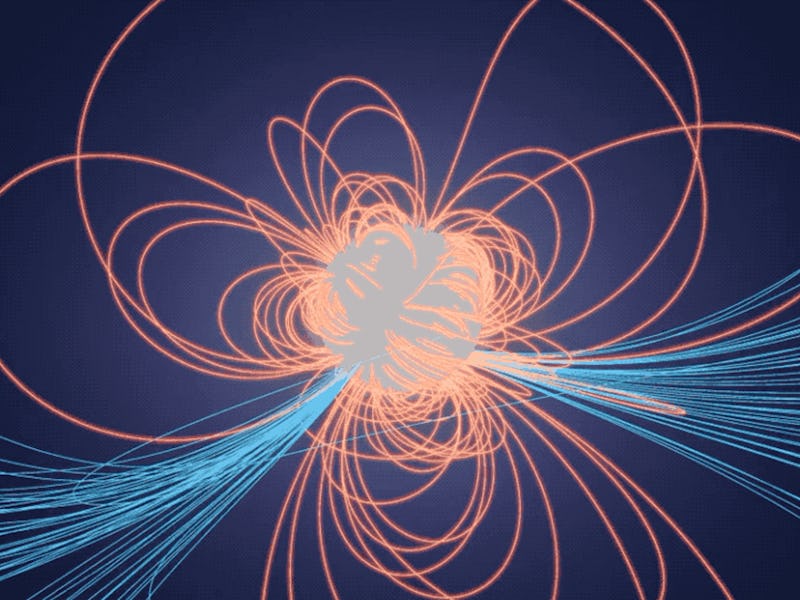Earthquakes Could Help Scientists Understand This Mysterious Space Glitch
An Earthly occurrence offers insights into neutron stars.

A team of astronomers has used a model of earthquakes to understand glitches in the timing of pulsars. Their results suggest that pulsars may have interiors that are far stranger than can be imagined.
Pulsars are perhaps the most accurate timekeepers in the entire Universe. The pulsars themselves are really rapidly spinning neutron stars. Neutron stars are ultra-dense balls of atomic matter, usually no bigger than a few miles across, with a mass a few times that of the Sun.
When these neutron stars spin, they blast out beams of radiation that draw circles around the sky. If the Earth happens to lie on one of those circles, then we see a periodic flashing from those beams of radiation, creating a pulsar.
Researchers using NASA's Fermi Gamma-ray Space Telescope detected the first extragalactic gamma-ray pulsar.
Space glitches
Pulsars will keep an accurate rhythm for incredibly long periods of time. But occasionally, they are known to glitch when they suddenly shift from one rotation rate to another.
Astronomers do not fully understand what causes the glitches, but recently a team of researchers put together a model of how glitches operate. The model is based on earthquakes.
Earthquakes have many causes, but one of them is when too much tension and pressure build up between tectonic plates and the crust of the Earth buckles under pressure. That results in an earthquake and a resettling of the material in the Earth.
A view of the recent earthquake in Turkey.
When it comes to neutron stars, their complex interiors can also undergo enormous pressures, with components of the neutron star material pressing up against other parts. If the pressure becomes too much, the neutron star rearranges itself, triggering a starquake and a realignment of its own interior. With the new distribution of mass within the neutron star, a new rotation rate emerges.
The researchers used this earthquake model to try to determine what is at the interior of neutron stars. The deep cores of neutron stars could be neutrons in a highly exotic state or a more degenerate form of matter made almost entirely of strange quarks.
The researchers found that the model of the neutron star interior that included strange quarks was better able to produce glitches through a starquake mechanism.
Astronomers will need to make further observations to test this idea, but it shows how the observational features of neutron stars can give us hints as to their mysterious interiors.
This article was originally published on Universe Today by Paul M. Sutter. Read the original article here.
This article was originally published on